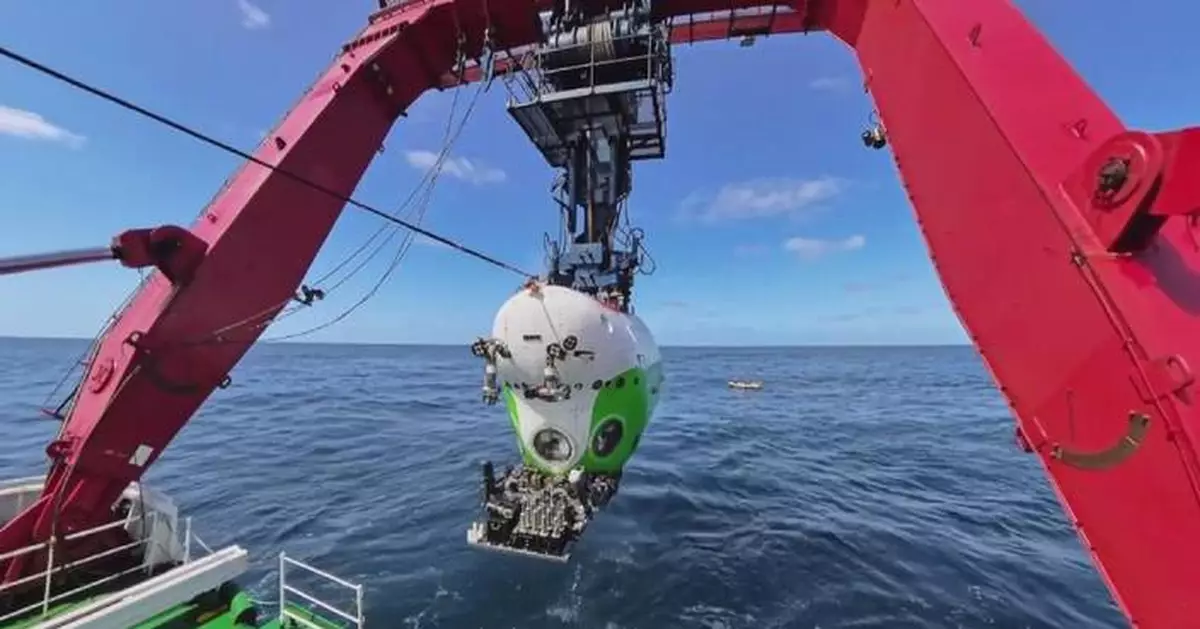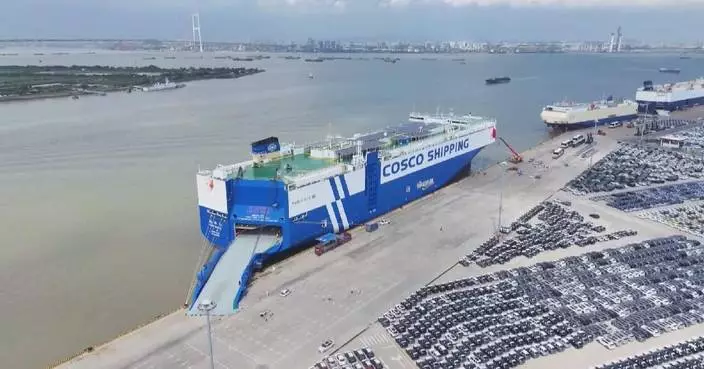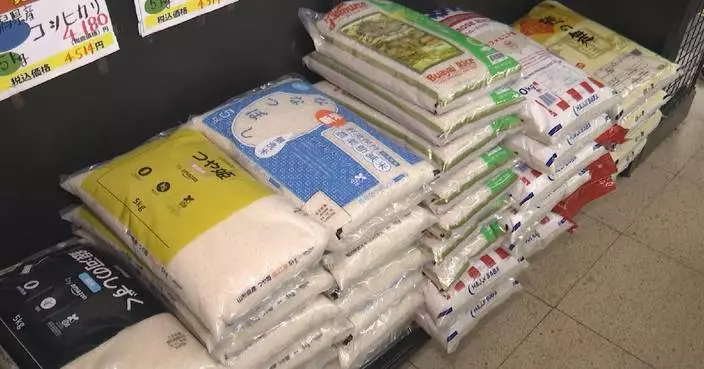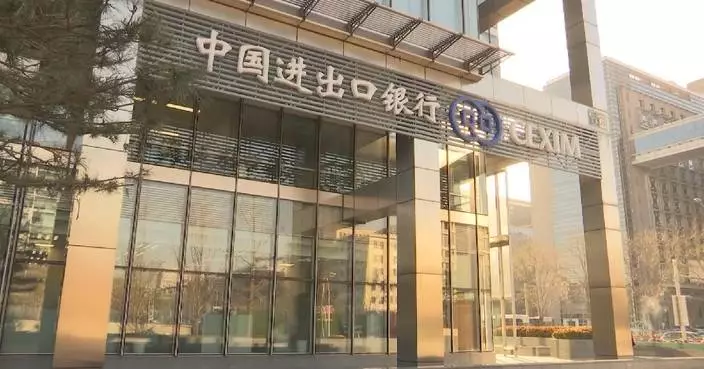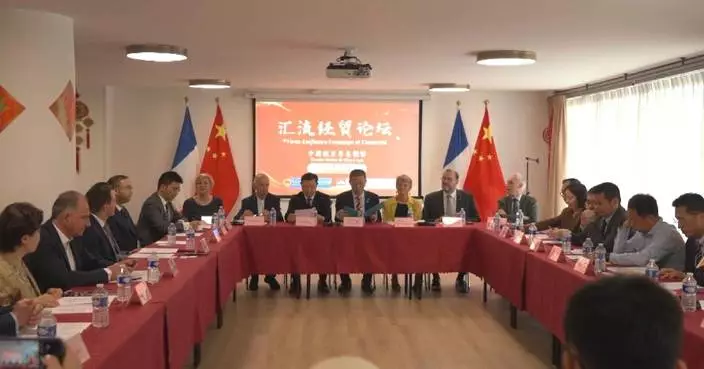Scientific institutes from China and New Zealand concluded an 80-day joint manned deep-sea expedition to the Puysegur Trench on Friday, completing multiple dives and bringing back a wealth of valuable samples from the deep ocean.
The dive voyage, supported by the Global Trench Exploration and Diving program launched by the Chinese Academy of Sciences (CAS), was co-organized by CAS's Institute of Deep Sea Science and Engineering (IDSSE) and New Zealand's National Institute of Water and Atmospheric Research (NIWA).
The Puysegur Trench is located in the southern part of the Tasman Sea, just off the southwestern coast of New Zealand. It is a significant geological structure at the boundary of the Australian and Pacific plates, with the deepest point estimated to reach about 6,208 meters.
A total of 68 scientists from eight countries, including China, New Zealand, Malaysia, Denmark, Germany, France, Brazil, and India, joined the collaborative international expedition to the trench.
Despite challenging sea conditions, the team completed 32 dive missions, discovering a variety of new marine species and geological features, and collecting a range of valuable deep-sea biological samples.
"According to initial identification by biologists at the site, all the specimens collected are new discoveries, with at least half possibly being new species from the deep ocean. These new species will need further study by our taxonomists to confirm. We also found the deepest cold seep ecosystem in the Southern Hemisphere within the trench," said Du Mengran, chief scientist of the joint research expedition.
International scientists involved in this deep-sea expedition expressed their desire to collaborate more with China on ocean exploration, highlighting China's advancements in submersible technology and its leading role in the global community in this area. "We want to keep working with IDSSE in the future. There are lots of other areas in New Zealand and beyond that need to be explored, [like] other trenches and other types of habitats in the deep sea," said Daniel Leduc, a researcher at NIWA.
"China has been absolute leading in this technology to develop this submersible, to make this facility available to the community, the global community, I think, it's an astonishing and very admirable thing that has been done," said Ronnie Glud, a professor at the University of Southern Denmark.

China, New Zealand complete joint dive expedition to Puysegur Trench
Shipments from China to the United States have surged since the two countries announced tariff cuts, driving up freight shipping costs for U.S. companies who are rushing to replenish inventories in the 90-day window and prepare for an uncertain future.
Among them is Stonemaier Games, a U.S. tabletop game publisher which has been producing games in China and selling them in the domestic market over the past 13 years.
Jamey Stegmaier, founder and president of the company, told China Central Television that they are trying to ship products out of China as quickly as possible, but the surging demand in freight shipping has made it much harder.
U.S. bookings for container shipments from China to the U.S. had surged by nearly 300 percent as of Wednesday, which has driven up freight shipping prices, according to data from container-tracking software provider Vizion.
"The challenge we are facing now is that a lot of other companies are doing the same thing. So, we are facing shipping delays, port congestions and higher freight shipping costs as a result. I don't have exact numbers on how much the prices will increase. Usually, freight shipping costs are locked in for about a month. So, on June 1, we anticipate seeing those prices go up significantly. And for any shipments that leave China for us in late June, there is the risk that they won't even arrive within the 90-day window. 90 days will fly by," Stegmaier said.
Stegmaier said his company is planning on their winter holiday production run, but it will be much more modest than usual as they don't know how much the tariffs will be at that time.
"The current challenge that we're facing is largely one of uncertainty. I don't even know if the 90-day tariff reprieve will hold. I don't know what will happen after that. So, we are planning for a very uncertain future. And that's the biggest impact, I would say, both on the production side and the inventory that we plan on bringing and holding here in the U.S. at our warehouses," he said.
Questioning the ability of the current U.S. government to build partnerships with other countries, Stegmaier expressed hope that his country will improve its economic ties with other countries and create a more stable business environment.
"So, I'm hopeful for what the future brings in stronger ties between the U.S. and China and any other country. I'm worried the current administration in the U.S. isn't well-equipped to handle that sort of strong, healthy relationship. But I'm hopeful that relationship will improve," he said.
Following a two-day China-U.S. high-level meeting on economic and trade affairs in Geneva, the world's two largest economies announced in a joint statement on Monday a series of measures, tariff modification measures, aimed at easing trade tensions, which took effect on Wednesday.
According to the statement, the United States will place a 90-day pause on 24 percentage points of the additional ad valorem rate of duty on articles of China, while retaining the remaining rate of 10 percent on those articles. It will also remove the additional tariff rates on imports from China announced on April 8 and 9 respectively.
China will suspend 24 percentage points of the additional ad valorem rate of duty on articles of the United States for an initial period of 90 days, while retaining the remaining additional ad valorem rate of 10 percent on those articles. It will remove the modified additional ad valorem rates of duty on those articles imposed by the No. 5 and No. 6 announcements issued by the Customs Tariff Commission of the State Council on April 9 and 11, respectively.

U.S. businesses rush to ship products out of China following tariff cuts



